Indexing & Abstracting
Full Text
Review ArticleDOI Number : 10.36811/ijpsh.2022.110039Article Views : 0Article Downloads : 2
Production Technology of Peach (Prunus persica L.) and Nectarines [Prunus persica (L.) Batsch, var. nectarina]
Ashok Kumar1*, BD Bhuj2 and Shri Dhar3
1Professor Horticulture, Department of Horticulture, IIMT University, Meerut, UP, India
2Professor Horticulture, College of Agriculture, G.B.P.U.A & T-Pant Nagar, UP, India
3Principal Scientist, Division of Vegetable Science, Pusa Campus, New Delhi, India
*Corresponding Author: Ashok Kumar, Professor Horticulture, Department of Horticulture, IIMT University, Meerut, UP, India, Tel: 7983232585, 7300511143; Email: yadavakdr@gmail.com; drkumaryadav@rediffmail.com
Article Information
Aritcle Type: Review Article
Citation: Ashok Kumar, BD Bhuj, Shri Dhar. 2022. Production Technology of Peach (Prunus persica L.) and Nectarines [Prunus persica (L.) Batsch, var. nectarina]. Int J Plant Sci Hor. 4: 91-111.
Copyright: This is an open-access article distributed under the terms of the Creative Commons Attribution License, which permits unrestricted use, distribution, and reproduction in any medium, provided the original author and source are credited. Copyright © 2022; Ashok Kumar
Publication history:
Received date: 08 August, 2022Accepted date: 20 August, 2022
Published date: 23 August, 2022
Abstract
The cultivated/domesticated peach (Prunus persica var. persica; Rosaceae, subgenus Amygdalus; synonym: Amygdalus persica) originated in China, but its wild ancestor, as well as where, when, and under what circumstances the peach was domesticated, is poorly known. Five populations of archaeological peach stones recovered from Zhejiang Province, China, document peach use and evolution beginning ca. 8000 BP. The majority of the archaeological sites from which the earliest peach stones have been recovered are from the Yangzi River valley, indicating that this is where early selection for favorable peach varieties likely took place. Furthermore, peach stone morphology through time is consistent with the hypothesis that an unknown wild P. persica was the ancestor of the cultivated peach. Production technology of peach, plum and apricot in India is elaborated in detail in relation to introduction, origin and distribution of crop, importance and uses, morphological features of tress, other related species involved, climate and soil requirement, varieties, propagation and raising of rootstocks, planting and planting densities, cropping systems, manure and fertilisers application, cultural practices, weed management, orchard floor management, after care training and pruning, pollination and pollinizers, flowering and crop regulation, use of growth regulators, fruiting in the crop, fruit thinning and drop, maturity and harvesting, post-harvest management, handling and storage, insects, pests and diseases, special production problems like low productivity, unfruitfulness and self-incompatibility, premature leaf fall, replant problem, alternate bearing and remedies and physiological disorders of the crop.
Keywords: Peach; Plum; Apricot; Production Technology; India
Introduction
The peach (Prunus persica L.) [Synonyms: P. persica f. aganonucipersica (Schübl. & G.Martens) Rehder; P. persica var. compressa (Loudon) Bean; P. persica var. davidiana (CarriŠre) Maxim.; P. persica subsp. davidiana (CarriŠre) Dippel; P. persica subsp. ferganensis Kostina & Rjabov; P. persica var. lasiocalyx H.L‚v. & Vaniot; P. persica var. nectarina (Sol.) Maxim.; P. persica var. nucipersica (L.) C.K.Schneid.; P. persica var. persica; P. persica var. platycarpa (Decne.) L.H.Bailey; P. persica subsp. platycarpa (Decne.) D. Rivera, Obón, S. Ríos, Selma, F. Mendez, Verde & F.Cano; P. persica f. scleropersica (Rchb.) Voss
Relatives
Apple, Malus domestica; blackberry, Rubus spp; capulin, P. salicifolia; chickasaw plum, P. angustifolia; loquat, Eriobotrya japonica; mayhaw, Crataegus spp.; pear, Pyrus spp. and strawberry, Fragaria ananassa] is a deciduous tree native to the region of Northwest China between the Tarim Basin and the north slopes of the Kunlun Mountains, where it was first domesticated and cultivated. In the genus Prunus, Peach (Prunus persica L.) is a most important stone crop in India. Its flower has light pink colour with 5 petals brought forth in early spring before the leaves. The fruit has yellow, dark red or whitish flesh and some fruit contains pink colour around the stone possessing a delicate aroma. Skin of the fruit that is either velvety (peaches) or smooth or hairless (nectarines) in different cultivars due to single gene mutation (dominant to recessive). The tree is rather small and mature tree grown up to 15 ft tall [1].
It is the most preferred and legendary fruit species among the stone fruits which is grown under low temperature in hilly areas of the temperate world. Due to stunning colors and high texture, Peaches are generally used as table fruits. Introduction of new crops or crop cultivars provide an ample opportunity for crop diversification in a particular weather condition to check economic feasibility for growing them commercially. It is one of the most important temperate fruit crop grown mainly in Jammu and Kashmir, Himachal Pradesh, Punjab, Uttarakhand, Nilgiri hills, Jharkhand and North Eastern States [2] valued for its fresh and canned fruits. Now days peach has become pride to poor and marginal hilly farmers of sub mountainous regions, plains of northern India and Southern hills and also in irrigated arid and plateau ecosystem. It is relatively performed well at an altitude ranging between 600-1000m from mean sea level. In recent times, it has been found that peach production has a declining trend mingled with a number of factors such as diseases, overdependence on a selective cultivars and global warming [3-6]. With advance of breeding efforts low chilling peach cultivars have been developed and their cultivation stretches from temperate regions to subtropical worlds. Keeping this in view some prominent low-chill peach genotypes were studied in this experiment to assess the performance with context to fruit quality characteristics and yield for commercial cultivation. It bears edible juicy fruits with various characteristics, most called peaches and others (the glossy-skinned varieties), nectarines. It belongs to the genus Prunus, which includes the cherry, apricot, almond, and plum, in the rose family. The peach is classified with the almond in the subgenus Amygdalus, distinguished from the other subgenera by the corrugated seed shell. Fruits are rich in protein, sugar, minerals and vitamins. It has various uses as fresh fruit as well as processed product [7-11].
Peaches and nectarines are the same species, though they are regarded commercially as different fruits. The skin of nectarines lacks the fuzz (fruit-skin trichomes) that peach skin has; a mutation in a single gene (MYB25) is thought to be responsible for the difference between the two. . Chinese literature dates its cultivation in China to 1000 B.C. and it was probably carried from China to Persia. Even though the word ‘nectarine’ was first used in England in 1616, there is no conclusive evidence that the usage of the word derived from the Greek word meaning nectar.

Figure 1: Flowering of Peach Orchards.
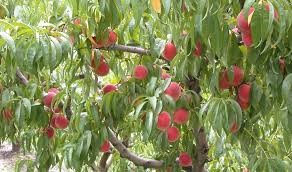
Figure 2: Fruiting of Peach Orchards.
Descriptions
Prunus persica grows up to 7 m (23 ft) tall and wide, but when pruned properly, trees are usually 3-4 m (10-13 ft) tall and wide. The leaves are lanceolate, 7-16 cm (3-6+1⁄2 in) long, 2-3 cm (3⁄4-1+1⁄4 in) broad, and pinnately veined. The flowers are produced in early spring before the leaves; they are solitary or paired, 2.5-3 cm diameter, pink, with five petals. The fruit has yellow or whitish flesh, a delicate aroma, and a skin that is either velvety (peaches) or smooth (nectarines) in different cultivars. The flesh is very delicate and easily bruised in some cultivars, but is fairly firm in some commercial varieties, especially when green.
Area and Production
China is the largest peach and nectarine producer in the world with 14,469,004 tones production per year. Adverse weather conditions are affecting production in China and the European Union. These are the largest producers of these fruits. Worldwide 25,003,345 tons of peach and nectarine is produced per year. Spain comes second with 1,529,919 tones yearly production. India is with 287,778 is ranked at 9. Deciduous fruits are mainly cultivated in North West Hills Region of India, comprising of States of Jammu & Kashmir (J&K), Himachal Pradesh (H.P.) and Uttar Pradesh (U.P.) and in the North Eastern Hills Region in the States of Arunachal Pradesh, Nagaland, Meghalaya and Manipur The Global Peach and Nectarines Market is esteemed to grow, witnessing a CAGR of 3.46% during the forecast period 2020-2025.
Soil and climate
It is cultivated on varied type of soils but deep sandy loam soil rich in organic matter is best. It is highly susceptible to water logging and prefer perfect drainage. It can be fitted in any type of farming system and can thrive well in high hills, foothills as well as mid-hills situations. Fertile sandy-loam to clay loam soils with pH range from 5.5 to 7.5 and free from water logging conditions are suitable for establishing deciduous fruit orchards.
Varieties
1. Peach Cultivars like July Elberta, Elberta, Peshwari, Quetta, Burbank and Stark Earliglo are well adopted.
2. Low-chilling cultivars viz. Flordasum, Flordared, Shan-e-Punjab, Sharbati and Sunred (nectarine) have become popular in subtropical belts of U.P. and Punjab States.
|
Peach |
J& K: July Elberta, Elberta, Quetta, Flordasun, Shan-e-Punjab, Sharbati |
H.P.: Alton, July Elberta, JH Hale, Sharbati, Shan-e-Punjab, Burbank |
U.P.: Sharbati Safeida, Flordasun, Shan-e-Punjab |
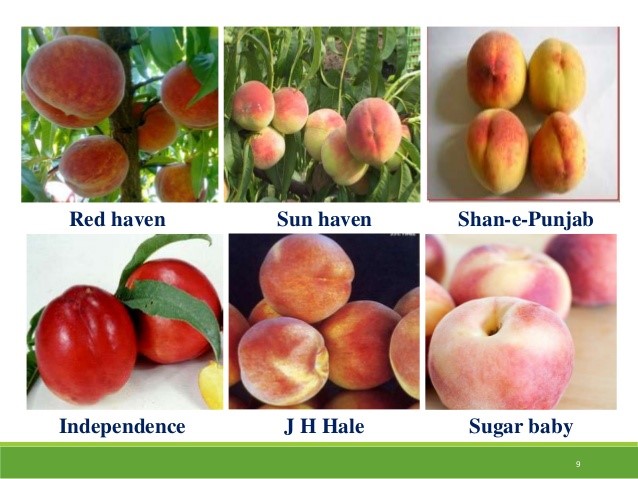
Figure 3: Illustration of Peach Cultivars.
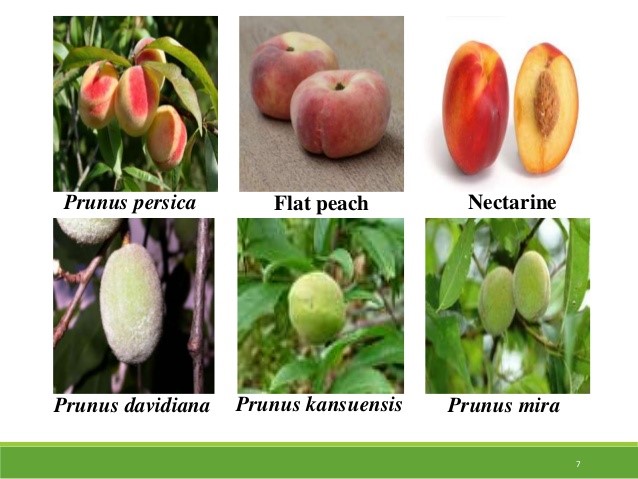
Figure 4: Illustration of Peach Species.

3. Nectarines Varieties: Arctic Jay. Artic Rose, Artic Star,Armking, Desert Dawn, Double Delight, Fairlane, Fantasia, Firebright, Fire Sweet, Flavortop, Goldmine, Heavenly White, Independence, John Rivers, Juneglo, Le Grand, Liz’s Late, Mericrest, Nectar Babe, Necta Zee, Panamint, Ruby Grand, Silver Lode, Snow Queen, Southern Belle, Stanwick, Stark Sunglo, Stribling Giant Free, Stribling White Free, Sun Grand, Sunred, 2W68W.
Propagation
Raising of root stock: For raising root stock, wild peach is propagated through seeds. Seeds are kept in moist sand for about 10-12 weeks for stratification. The germination and vigour of the seedling can be improved by pre-sowing treatment of seeds with thiourea (5g/l water), GA3 (200mg/l water) or IBA (100 mg/l water). The seeds are sown in beds about 5 cm deep and 15 cm apart at a row to row spacing of 20 cm in the month of October-November. Beds are mulched with dry grass followed by light irrigation.
1. Grafting: Tongue grafting in the month of November is commercial method of multiplication. A smooth slanting cut of 4-5 cm is made on the one year old rootstock at about 15-20 cm above the ground level and another downward cut is given starting approximately 2/3rd from the top of the slanting cut and about 2 cm in length. This formed a tongue like structure on the stock. Similar cut is also made on the lower side of the scion exactly matching the cut given on the rootstock. The scion of 20- 25 cm length having 2-3 buds of previous season growth is then fitted lightly with the rootstock and tied with polythene strips. The union completed within 30-45 days and after that polythene strip is also removed to avoid girdling.
2. Intercropping: Additional income can be obtained by growing intercrops such as ginger, chilli, French bean, rice bean, urd bean and vegetable crops in the under storey of peach during pre-bearing stage.
3. Preparation of land and pits: Contour lines are marked and half moon terraces (1m.dia.) are prepared. Pits (size 0.75 x 0.75 x 0.75 m) are dug at 5 x 5 m apart on half moon terraces and refilled about 10 cm above the ground level with upper 30 cm soil along with 15-20 kg FYM, 100g Urea, 100g MOP, 300g SSP and 30g chlorpyriphos.
Rootstocks
Peach Tree Short Life is a rootstock- and soilrelated syndrome or complex, not a disorder attributable to a specific organism. It is common in the southeastern USA. PTSL is characterized by sudden death of trees above the soil line in springs that were apparently healthy the previous fall. Profuse suckering usually occurs since roots are not killed. PTSL can be avoided by not replanting trees on old peach sites, or by using ‘Guardian’ rootstock, which is tolerant. Predisposing factors such as low soil pH, hardpans, low nutrient levels, ring nematode buildup, cultivation, fluctuating winter temperatures, fall pruning, and use of Nemaguard rootstock all accentuate PTSL.
|
Rootstock |
Characteristics |
|
Bailey |
Cold hardy rootstock with good overall performance; best in the northern states |
|
Guardian |
Vigorous rootstock with resistance to peach tree short life syndrome; slightly more expensive. Used extensively in the eastern USA, and in areas where peaches were planted previously. |
|
GF677 (Amandier) |
A peach-almond hybrid for adaptation to high pH soils; highly vigorous; not well adapted for eastern US |
|
Halford |
Good overall rootstock for northern states |
|
Lovell |
Moderately invigorating rootstock with fair resistance to peach tree short life |
|
Nemaguard |
Invigorating rootstock with resistance to root knot nematode; susceptible to other nematodes and peach tree short life |
|
Siberian C |
Cold hardy rootstock used only in the northern tier of states and Canada; short-lived and poor in the southern states |
Planting Design, Training, Pruning
- Planting Design - Free-standing peach orchards - rectangular spacing of 18 x 20 ft (110 trees/acre), or 12-15 x 18 ft (161-202 trees/acre), Trellised systems - 300-500 trees/acre. Pollinizers are not needed, but growers must plant several different cultivars to extend their marketing season, since peaches ripen quickly and cannot be stored for more than 1-2 weeks. In addition to the planting designs pictured here, a variety of trellised systems are also used in Europe.
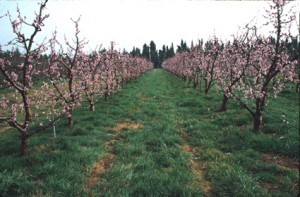
Figure 5: Open center with 3-5 scaffolds radiating from the trunk 18-36″ above the ground.

Figure 6: Free-standing peach trees are trained most commonly to Peach trees can be trained to central leader.
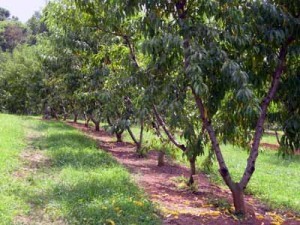
Figure 7: Peach trees can also be trained perpendicular V.
2. Training and pruning: Peaches are usually trained to an open-centre system. Cut back newly planted trees to about 30 inches high, just above a lateral branch; select 3-4 laterals with wide-angle crotches spaced evenly. Peach require heavy and regular pruning because fruiting occurs laterally only on previous season’s growth. During early bearing, 20-30% linear growth of the shoots should be removed. The best time of pruning is last week of October. Water sprouts that come below the graft union is removed periodically.
Weeding and Mulching
In apple orchards, grass mulching (10cm thick) with one application of post-emergence herbicide Glyphosate (0.8 kg/ha) was found to be effective. The shrubby weeds were, however, best controlled by 500 ppm Gramaxone + 100 ppm 2,4,5-T application. Moisture conservation was maximum under grass mulching and, therefore, recommended for apple in H.P. Mulching with oak leaf was effective in UP.
Supplementary Irrigation
Trickle irrigation at 75 per cent of field capacity results in better tree growth and higher fruit yield in apple when raised on semi-dwarfing rootstocks. For apple, most critical period of water requirement is April to August and peak water requirement is just after fruit set. 114 cm of water during whole year through 19 irrigations have been recommended. Drip irrigation saves water considerably. Field trials indicated a total irrigation requirement of 3840 liters water per tree under conventional system of irrigation; under drip system 1695 liters of water was enough. The application efficiency under drip system is about 2.27. In Santa Rosa plum, irrigation at 50% field capacity gave better growth and economic returns.
Peach Harvest, Post-harvest Handling
1. Maturity: The best predictor of maturity is background color. Background color of fruit changes from green to straw-yellow during ripening, and fruit with a fair degree of yellow and enough firmness to ship are mature enough for harvest.
2. Harvest Method: Peaches are harvested by hand. Usually, trees are picked 3-4 times at 2-3 day intervals, taking only the firm mature fruit at each picking.

Figure 8: Post Harvest Handlings of Peaches Fruits
3. Postharvest Handling: Packing line operations are standard; fruit are first hydro cooled to reduce temperature, then culled, brushed and waxed, and sorted for size. Peaches are de-fuzzed during the brushing/waxing process. Fruit are packed into 25 lb boxes, andshipped immediately after harvest in refrigerated trucks or after short storage periods due to poor shelf life.
4. Storage: Peaches have a shorter storage life than most other temperate fruits. The recommended cold storage conditions are 0- 0.3°C and 85-90% relative humidity. In these conditions, freestone peaches and nectarines can be kept for 2 weeks and clingstone for 4 weeks. Precooled peaches can be stored for 28-36 days. In controlled atmosphere storage containing 5% CO2 and 1-2% O2 at 0°C peaches can be stored up to 42 days. The peaches came into bearing after 2 years of planting in the field. The economic bearing life of peach plant is about 20-30 years. The yielding capacity increases with the age of the plant. The average yield of fully grown trees of different varieties varies from 50 to 125 kg in hills. In conventional plantation, 7-10 tones/ha and, under high density with Tatura trellis system of training, about 23 tones/ha yield have been obtained.
Harvesting and yield
For harvesting peach at the right time, the proper color development in fruits and pit browning are considered as reliable guides. In yellow fleshed cultivars, deep orange color development on fruits is associated with proper maturity. At least 5% of the pit area also should be brown if the fruit is to develop good flavor at ripening. For distant market, fruits are harvested when they attain good colour with hard skin, whereas, for local consumption, ripe peaches are harvested by twisting with hand. The peak harvesting period of peach is last week of April to May. On an average, 20-30 kg fruit/tree can be harvested from 3 years old tree. Peach is less affected by diseases and pests. However, sometimes, powdery mildew and shot hole cause damage to the crop.
Common Pests and Diseases
I. Diseases
- Bacterial canker Pseudomonas syringae

Figure 9: Canker on peach trunk.
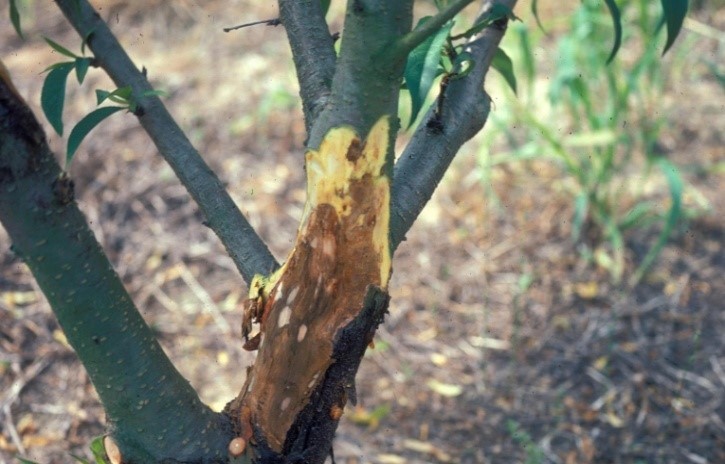
Figure 10: Canker on peach trunk (bark peeled to show discoloration to tissue underneath).
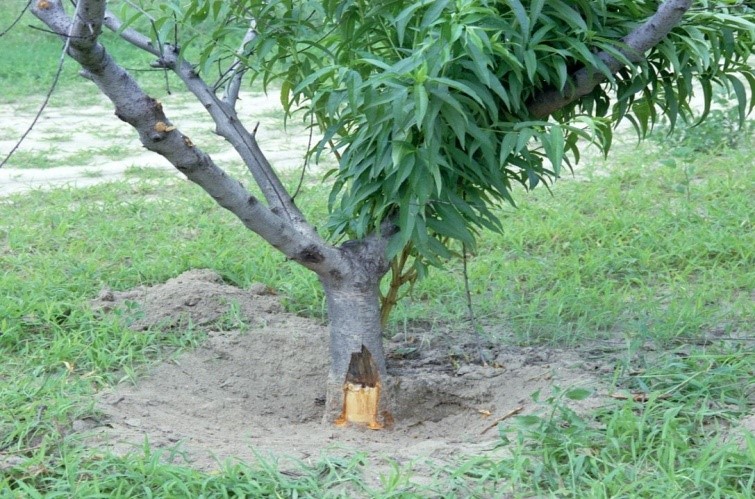
Figure 11: Canker on peach trunk.
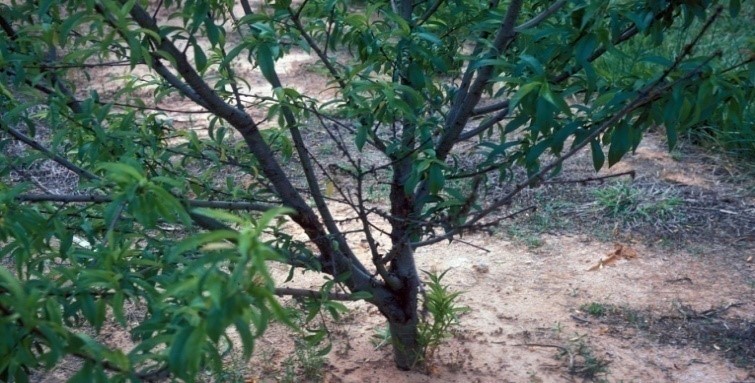
Figure 12: Peach tree with dark cankers on bark.
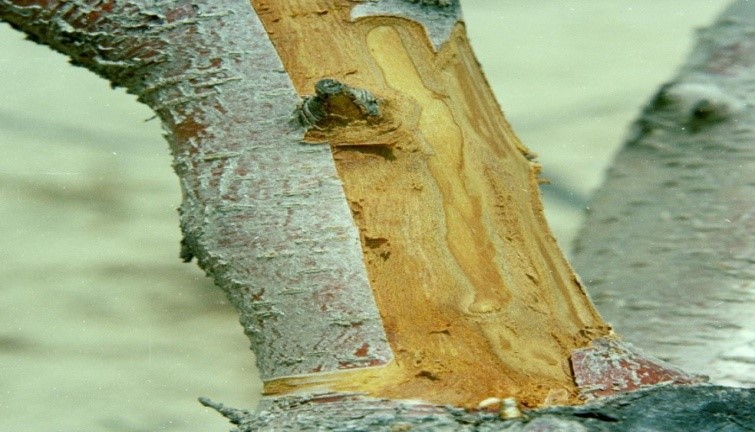
Figure 13: Canker on peach trunk.
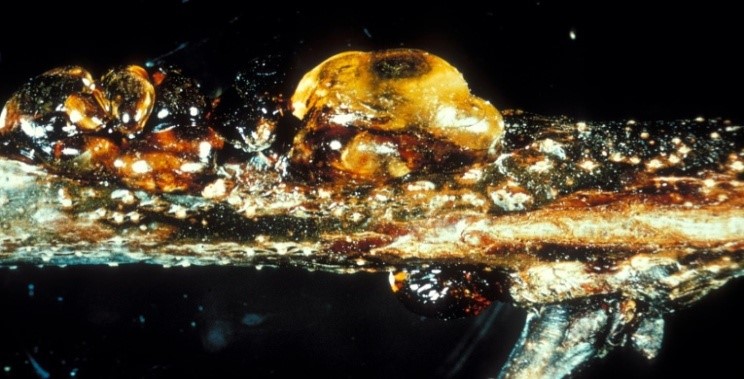
Figure 14: Canker exuding gum on infected peach tree.
Symptoms
Cankers on twigs at bases of flower and leaf buds, in pruning wounds or at the base of spurs which exude amber colored gum; cankers spread upwards and form sunken areas in winter; if pathogen enters dormant buds they may be killed or open normally in Spring before collapsing in early Summer; infected buds may be symptomless.
Management
Ensure that a suitable peach variety and rootstock is chosen based on geographic location and environmental conditions to prevent stress to tree which predisposes tree to canker disease; apply protective copper spray to trees before flowering; prune trees in early summer to decrease likelihood of infection.Ensure that a suitable peach variety and rootstock is chosen based on geographic location and environmental conditions to prevent stress to tree which predisposes tree to canker disease; apply protective copper spray to trees before flowering; prune trees in early summer to decrease likelihood of infection.
2. Bacterial spot: Xanthomonas campestris
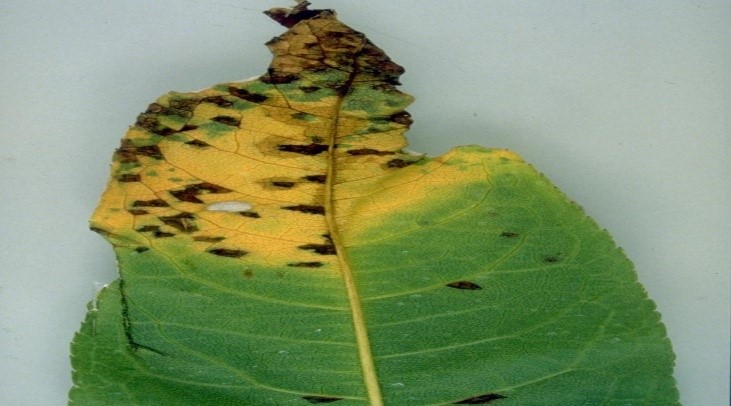
Figure 15: Symptoms of bacterial spot on peach leaf.
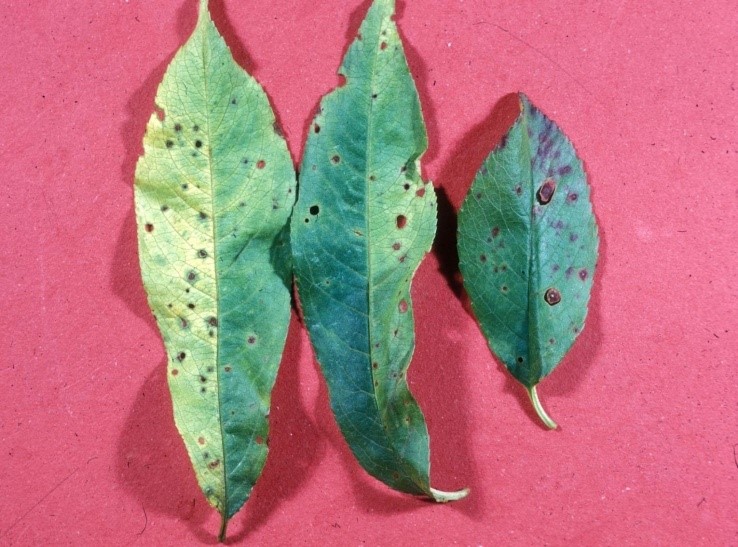
Figure 16: Symptoms of bacterial spot on peach leaves.

Figure 17: Symptoms of bacterial spot on peach leaf.

Figure 18: Peach tree infected with bacterial spot.
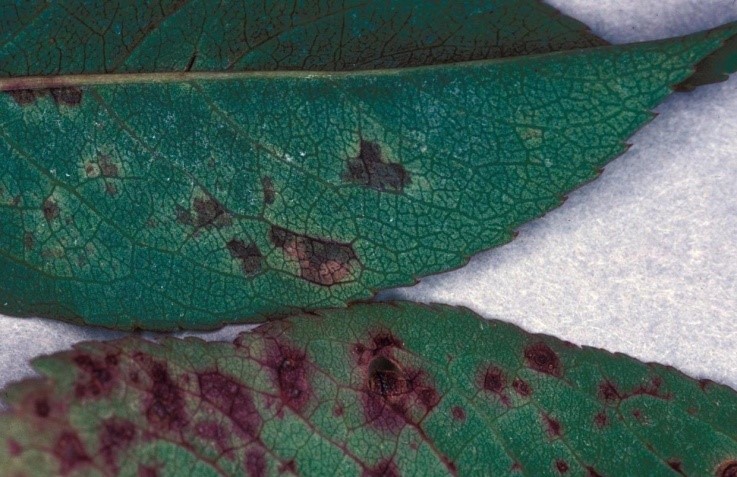
Figure 19: Symptoms of bacterial spot on peach leaves.

Figure 20: Symptoms of bacterial spot on peach fruit.
Symptoms
Water soaked, angular gray lesions on the underside of the leaves which turn purple and necrotic in the center and cause a shot hole appearance if lesion center drops out; if lesions are present in high numbers on leaves they may become chlorotic and drop from tree; cankers develop on twigs either as raised blisters or as a dark area surrounding a bud that fails to open; in years of severe infection the entire fruit crop may be lost; lesions on fruit begin as small brown, water-soaked lesions which may exude gum.</Water soaked, angular gray lesions on the underside of the leaves which turn purple and necrotic in the center and cause a shot hole appearance if lesion center drops out; if lesions are present in high numbers on leaves they may become chlorotic and drop from tree; cankers develop on twigs either as raised blisters or as a dark area surrounding a bud that fails to open; in years of severe infection the entire fruit crop may be lost; lesions on fruit begin as small brown, water-soaked lesions which may exude gum.
Comments
Periods of frequent rainfall during late bloom and early petal drop increase likelihood of fruit and leaf infection; infection is rare during hot, dry weather.
Management
Avoid planting susceptible peach varieties in areas where disease is known; once disease is visible it can be difficult to control, protective copper applications in the Fall prior to leaf drop and/or application in early growing season may help prevent the disease; care should be taken as peach trees are very sensitive to copper.
3. Crown gall Agrobacterium spp:

Figure 21: Crown gall symptoms.

Figure 22: Gall on branch of peach tree.
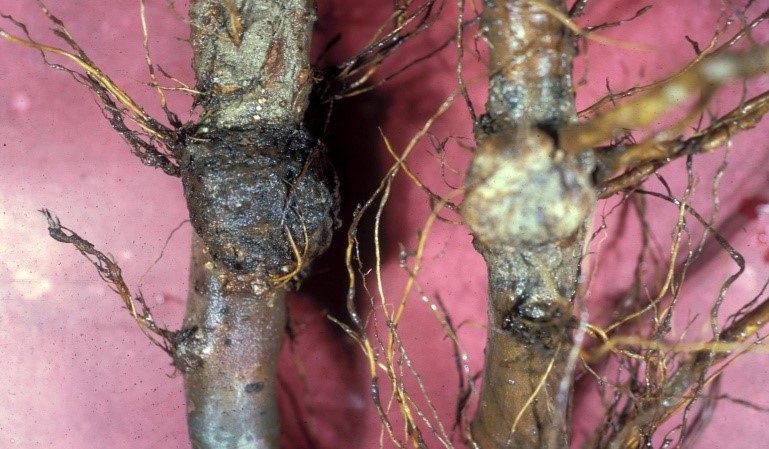
Figure 23: Galls on peach roots.
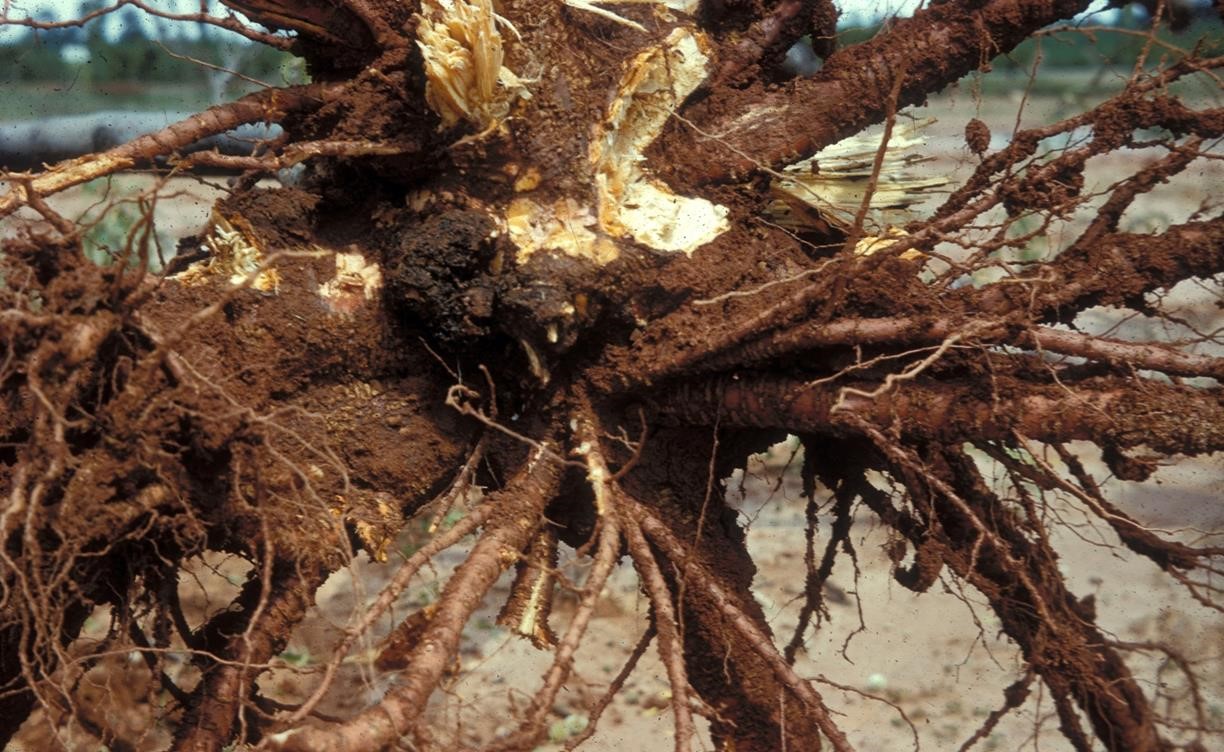
Figure 24: Galls on roots of peach tree.
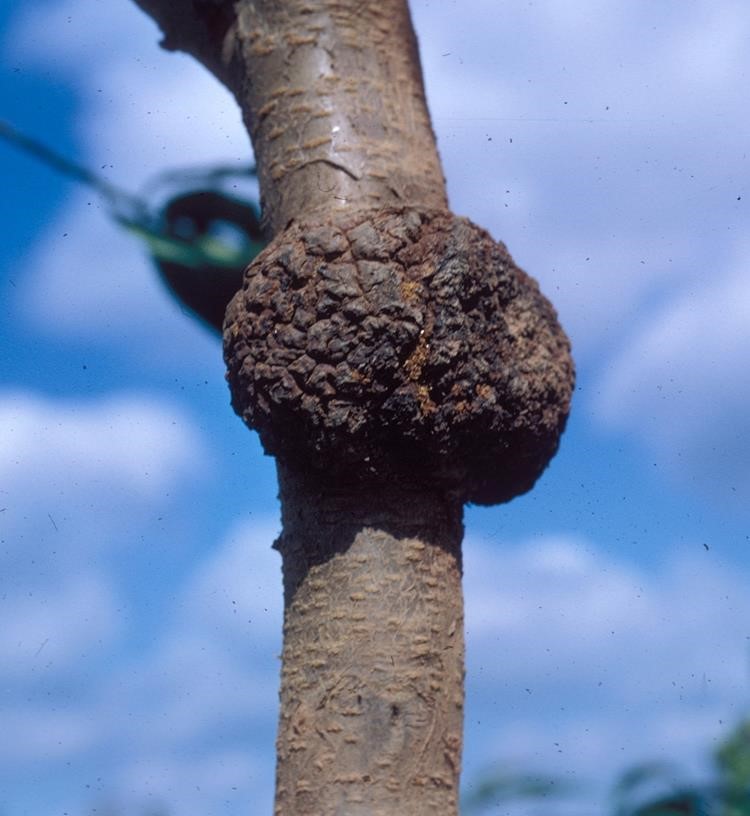
Figure 25: Symptoms of crown gall on trunk of peach tree.
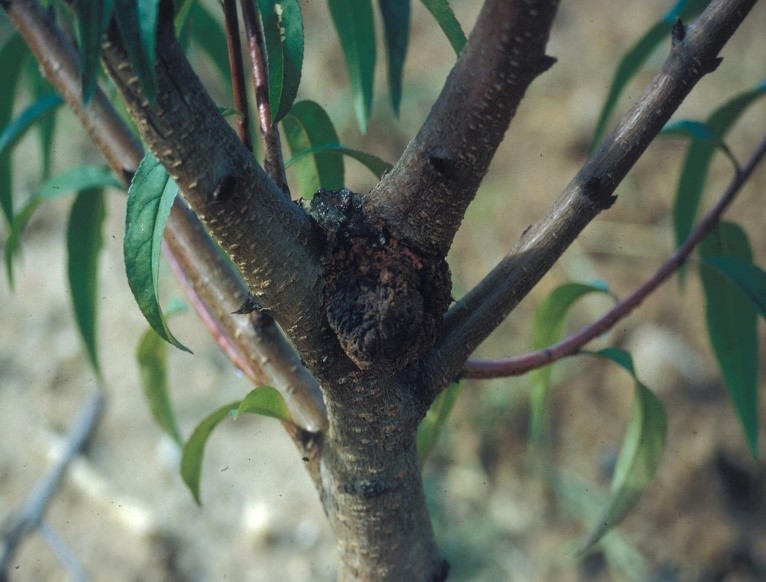
Figure 26: Gall on peach tree.
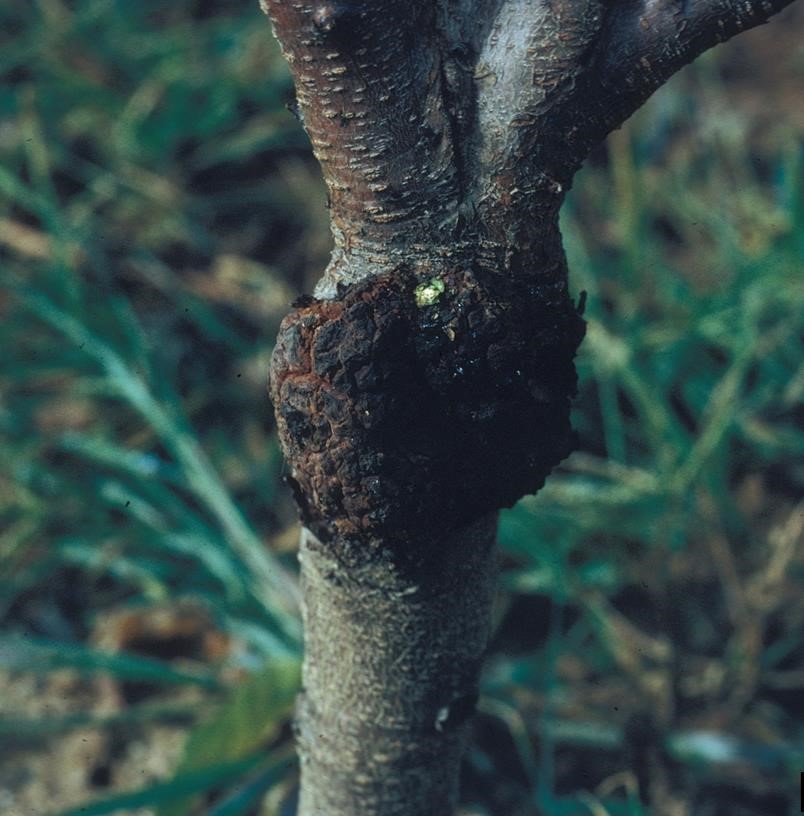
Figure 27: Large gall on trunk of peach tree.

Figure 28: Symptoms of crown gall on trunk of peach tree.
Symptoms
Galls on roots and/or crown of tree which can range in size from so small they are not visible to the naked eye up to 10 cm (4 in) in diameter; galls first become visible as white, fleshy swellings that grow rapidly and become tan to brown in color; galls typically develop at the site of a wound and new galls form adjacent to old ones the next year.
Comments
Infection with crown gall begins at the site of plant wounds; disease emergence is favored by poorly-drained, alkaline soils and previous feeding damage by nematodes.
Management
Chemical control of the disease is generally ineffective; an effective bacterial biological control is available for commercial production; cultural control methods include: planting only certified, disease-free material, planting peach in well-draining soil, rotating infected fields with a non-host before peach is planted and also using good sanitation practices.
4. Scab Cladosporium carpophilum
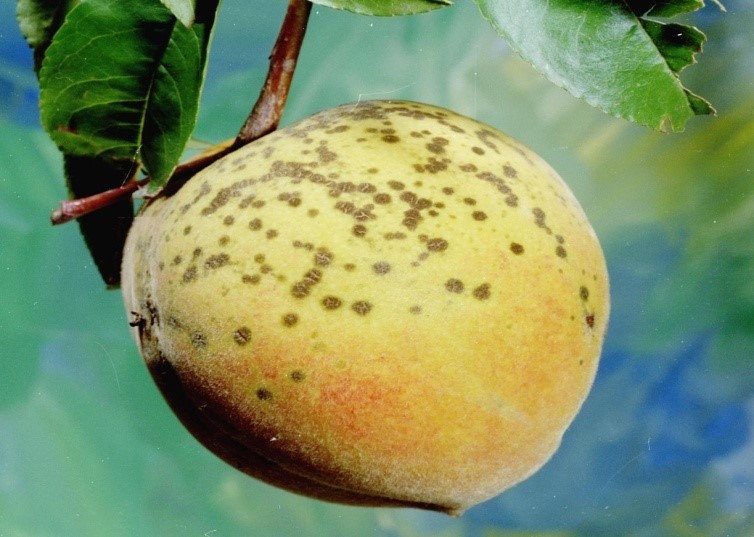
Figure 29: Scab symptoms on peach fruit.
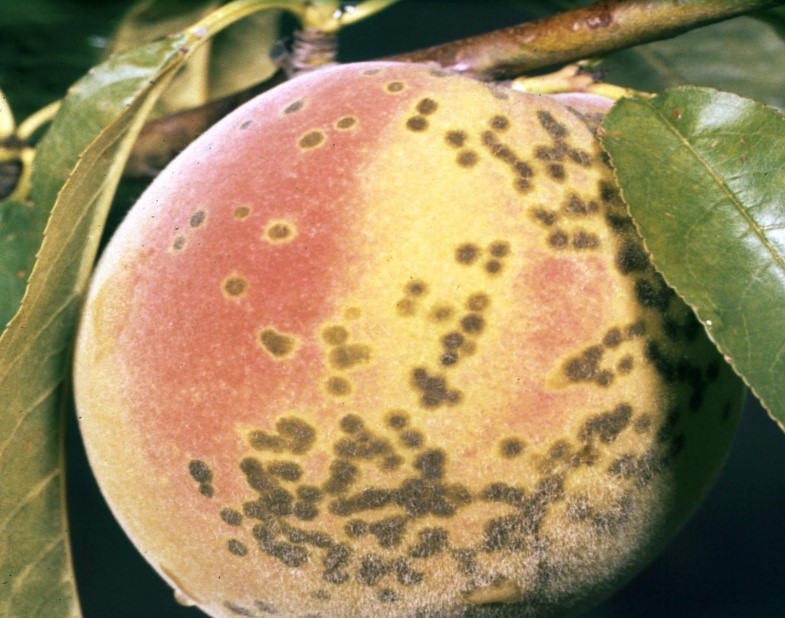
Figure 30: Scab on peach fruit.
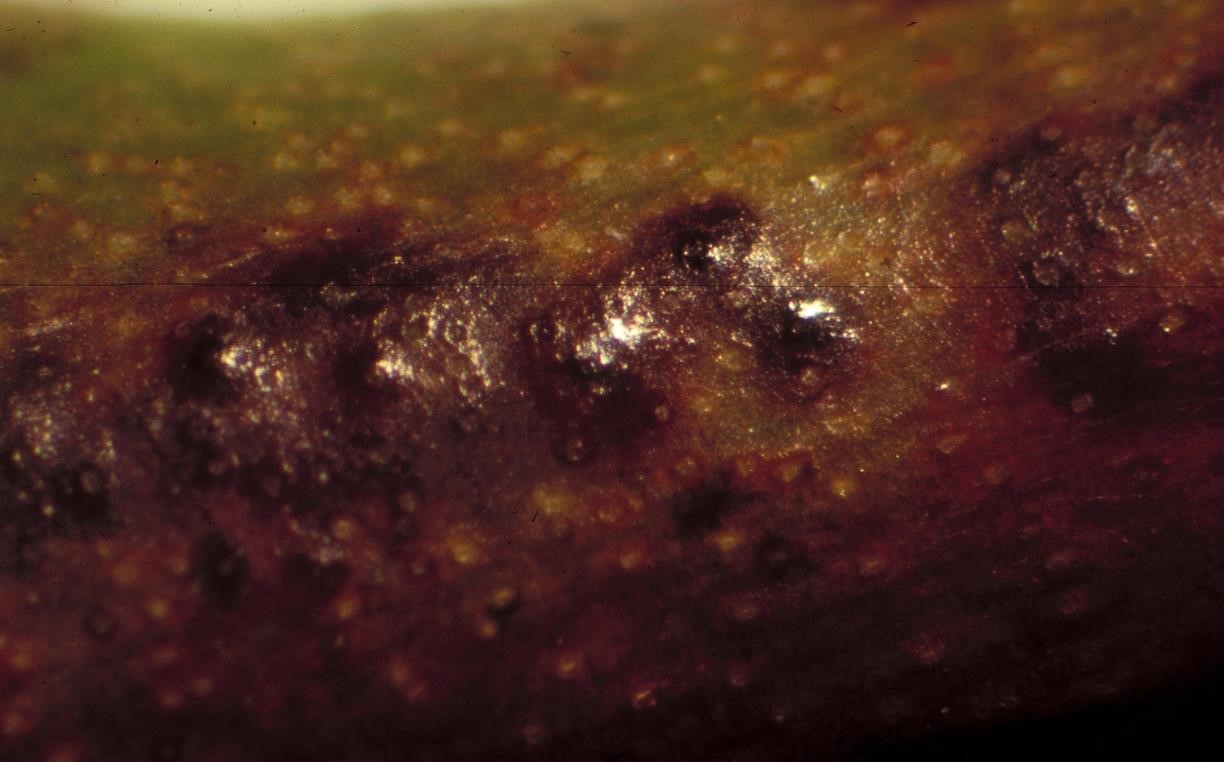
Figure 31: Scab symptoms on peach twig.
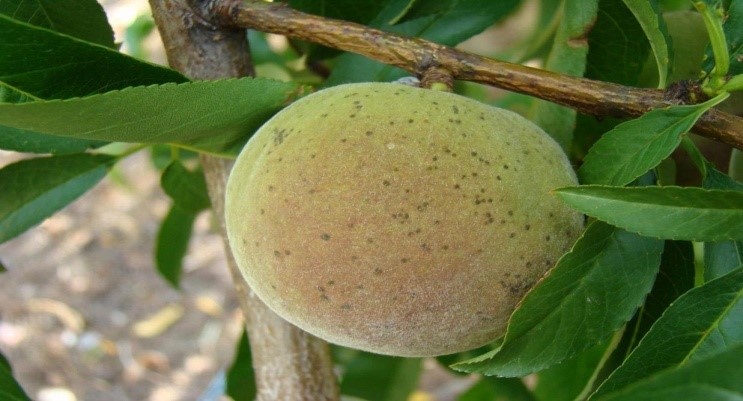
Figure 32: Scab symptoms on peach fruit.

Figure 33: Scab symptoms on peach twigs.
Symptoms
Small, green to olive circular spots on surface of fruit, usually close to stem end, which enlarge, darken and develop a green or yellow lesions may coalesce and cause fruit surface to crack; lesions on infected green twigs are hardly visible to start off with but become brown with a raised border before turning purple or dark brown; infected leaves develop angular or circular lesions on the lower surface which are initially a similar color to the leaf but turn olive green as they mature; leaf lesions may coalesce to form chlorotic patches; defoliation may occur
Management
Control currently relies completely on the use of fungicides; pruning the tree canopy promotes good air circulation and allows light to penetrate which can help control scab
II. Category: Fungal
5. Brown rot Monilinia fructicola

Figure 34: Blighted blossoms.
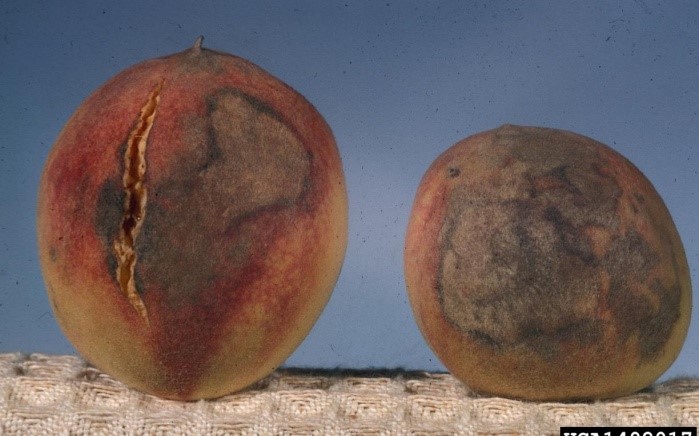
Figure 35: Brown rot on fruit.

Figure 36: Symptoms of brown rot on fruits.

Figure 37: Symptoms of brown rot on peach twigs and blossoms.
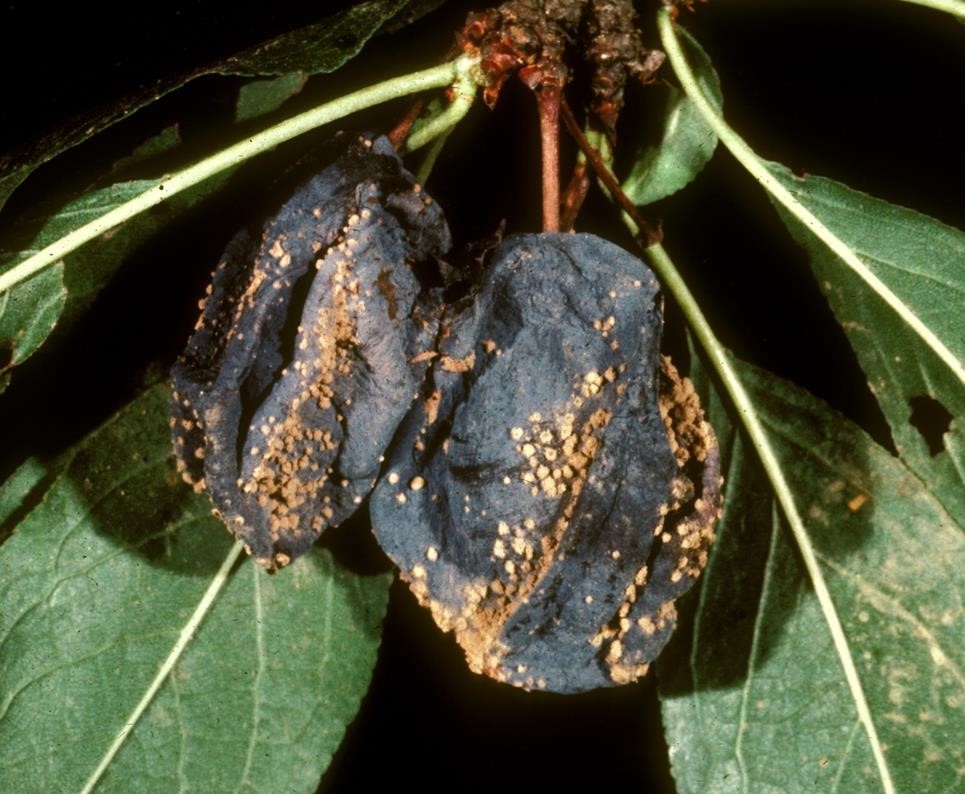
Figure 38: Brown rot on fruit.

Figure 39: Symptoms of brown rot on peach blossom.
Symptoms
Brown discoloration of fruit skin and inner tissue; fruit skin wrinkled; collapsed flowers exuding sap from their bases; tan cankers with dark edges on twigs; gray-brown spore masses may be present on cankers
Comments
Fungus survives in mummified fruit on the tree, blighted blossoms, cankers and infected twigs; blossom and twig blights are promoted by periods of wet weather
Management
The currently most effective method of controlling brown rot is through the application of appropriate protective fungicides timed so that they are applied when the susceptible flower parts are exposed or after a wet period; avoiding sprinkler irrigation protects the leaves and flowers from wetness that promotes the disease. Cultural control methods include: removing mummified fruit from tree, pruning infected twigs and reducing plant stress by providing adequate levels of water and fertilizer
6. Rust Tranzschelia discolor
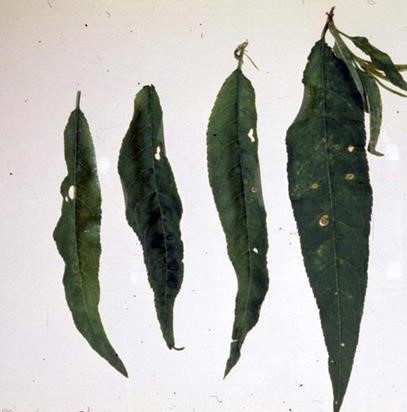
Figure 40: Rust symptoms on peach leaves.
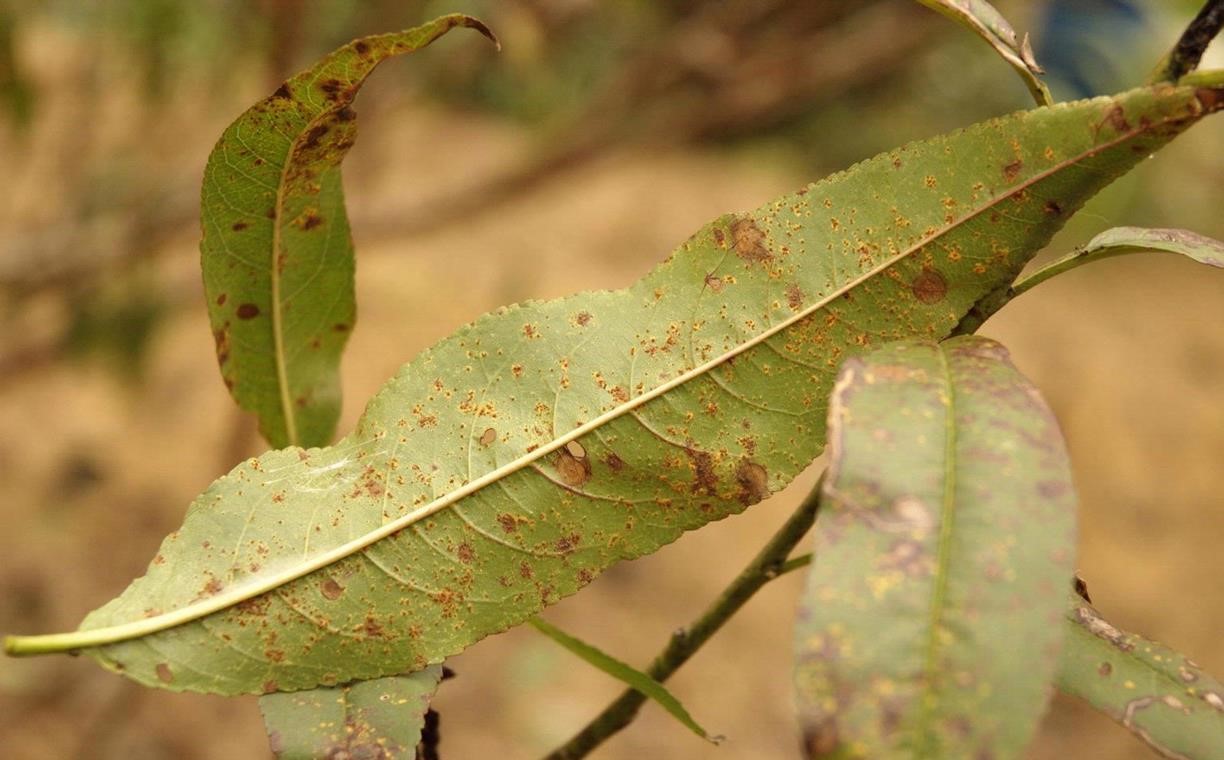
Figure 41: Rust symptoms on peach leaves.
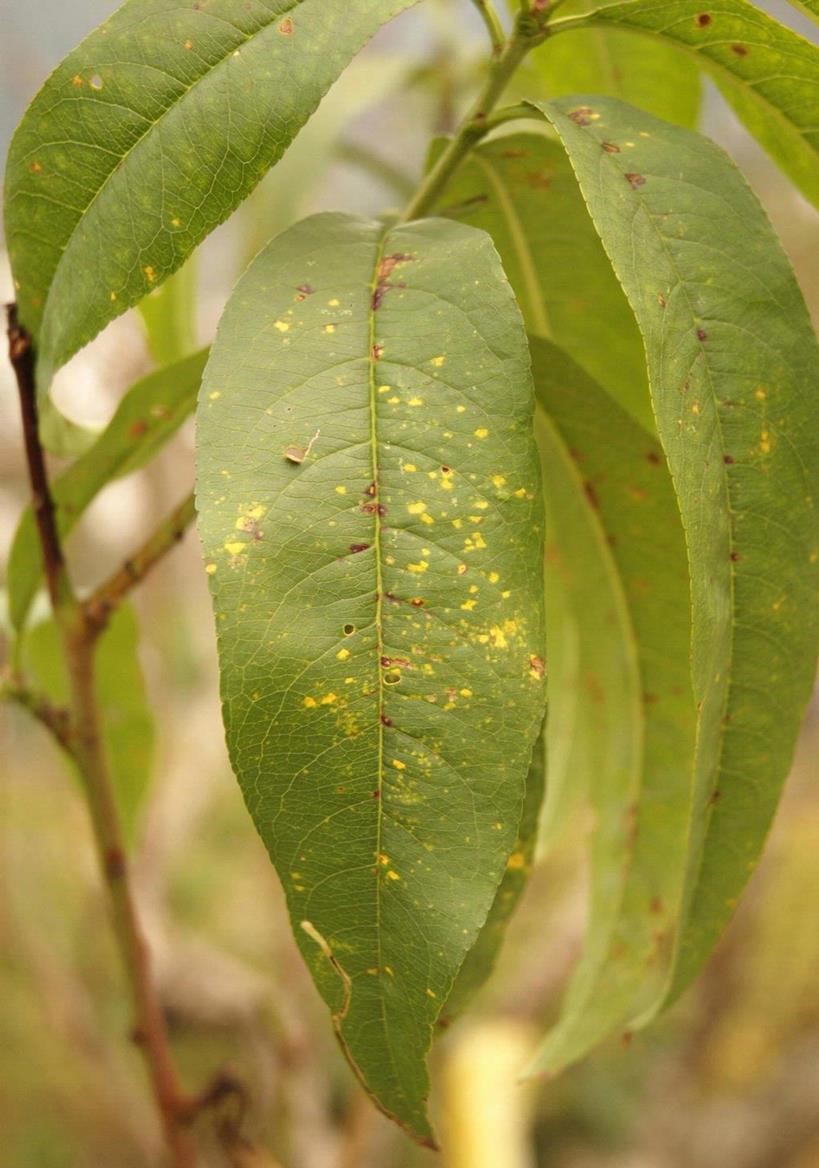
Figure 42: Rust spots on peach leaves.
Symptoms
Pale yellow-green spots on both upper and lower leaf surfaces which are angular in shape and turn bright yellow in color; spots on lower leaf surface develop orange-red spores
Comments
Fungus overwinters in twigs or in leaves which remain attached to the tree
Management
Rust can be prevented by spraying trees with protective fungicides; application is usually carried out one, two and three months before harvest in areas prone to early season outbreaks of the disease and after harvest in areas where disease is less problematic or emerges later in the season
7. Shot hole disease: Wilsonomyces carpophilus
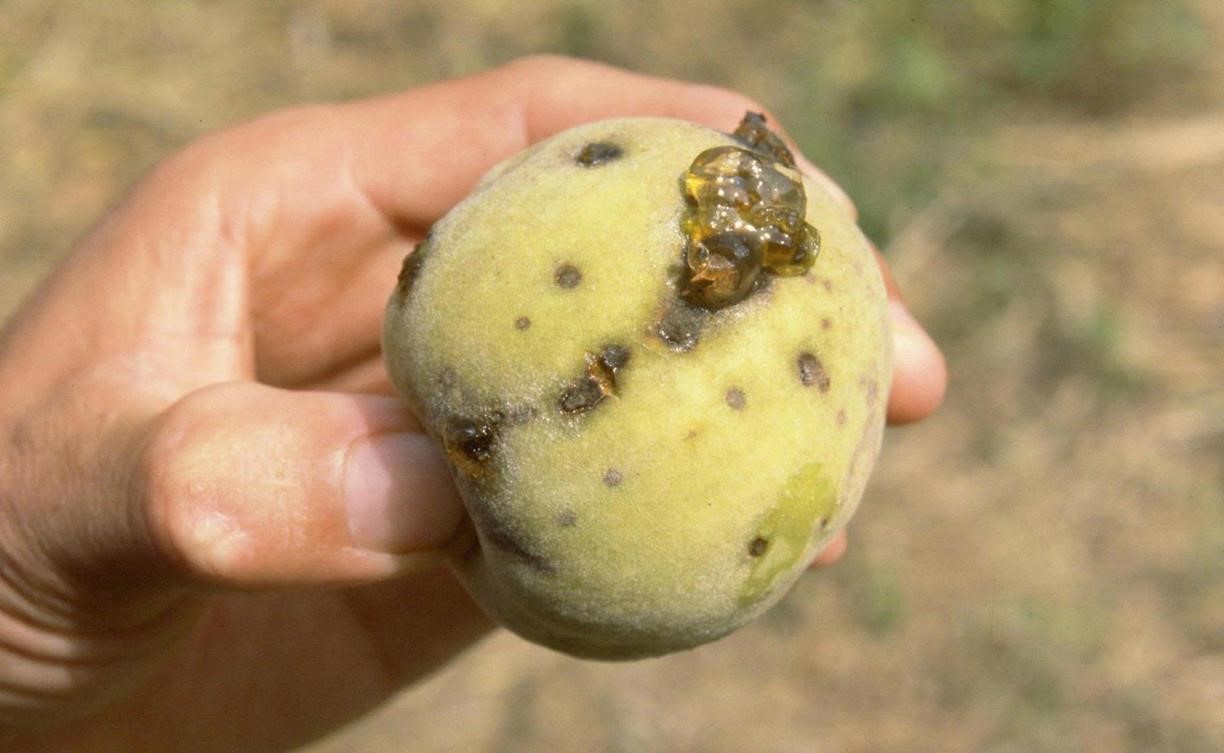
Figure 43: Shot hiole symptoms on peach fruit.
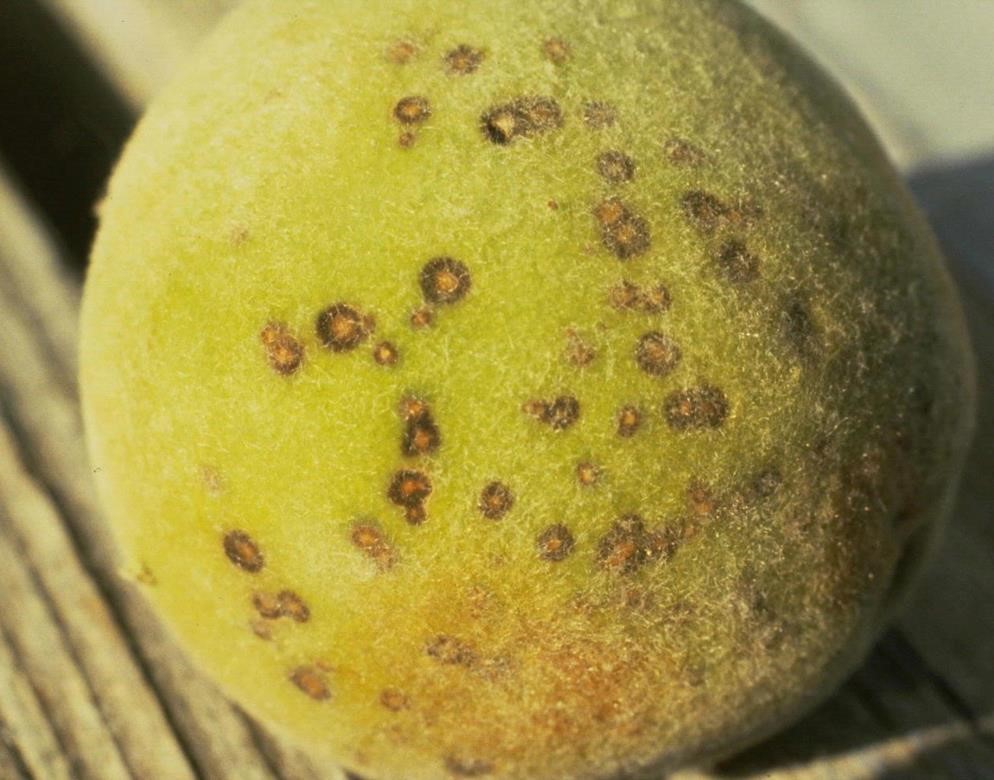
Figure 44: Shot hole lesions on peach fruit.
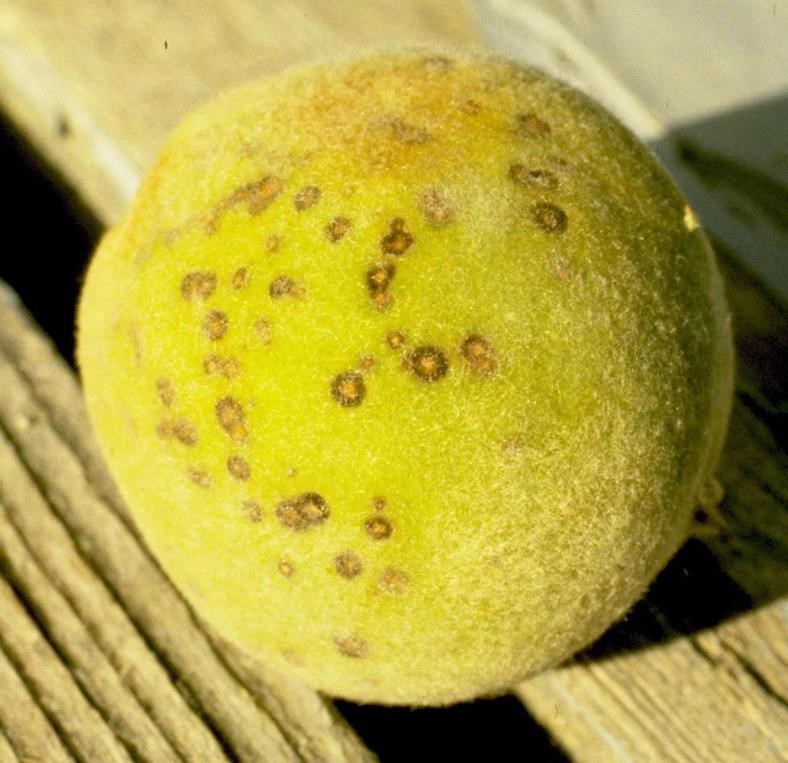
Figure 45: Shot hole lesions on peach fruit.

Figure 46: Shot hole lesions on peach fruit.
Symptoms
Brown lesions with purple edge on fruit, twigs and buds; holes in leaves due to lesions which have dried and dropped out; brown lumps developing in the center of lesion (visible with hand lens); buds turning brown or black and exuding sap; tan lesions with brown margins which exude sap on twigs.
Comments
Disease emergence favor s wet, windy conditions.
Management
Application of Bordeaux mixture before rains in fall are sufficient to protect dormant buds and twigs over winter.
8. Silver leaf disease Chondrosterum pupureum
Symptoms
Leaves have a silvery appearance; if infection is severe the leaves may curl upwards and become necrotic; death of individual limbs or entire tree may occur; fungal fruiting bodies appear on the surface of the dead bark.
Comments
Pathogen is spread via spores released after rainfall during periods of high humidity and can enter trees through pruning wounds; risk of infection is increased if tree is pruned during late winter or early spring; trees also susceptible when they are heavily pruned.
Management
Control of silver leaf disease is difficult and infection can be widespread after rainfall in areas where the disease is present; strategies to reduce the incidence of the disease include: removing all plant debris e.g. pruning waste, stumps, and logs; pruning tree during dry periods and treating large pruning wounds with fungicidal dressing.
III. Category: Viral
9. Leaf curl Taphrina deformans
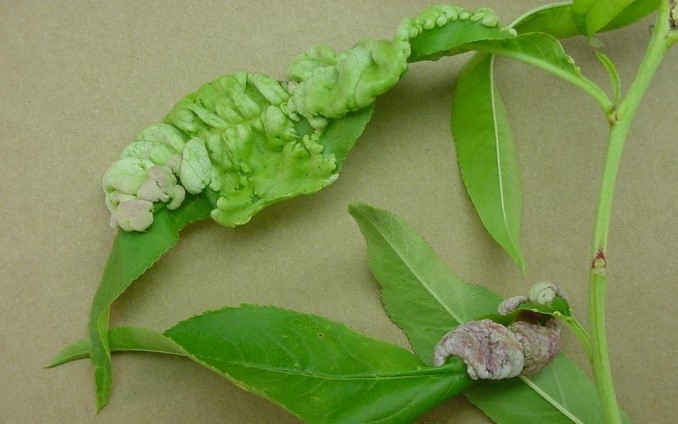
Figure 47: Peach leaf curl symptoms.
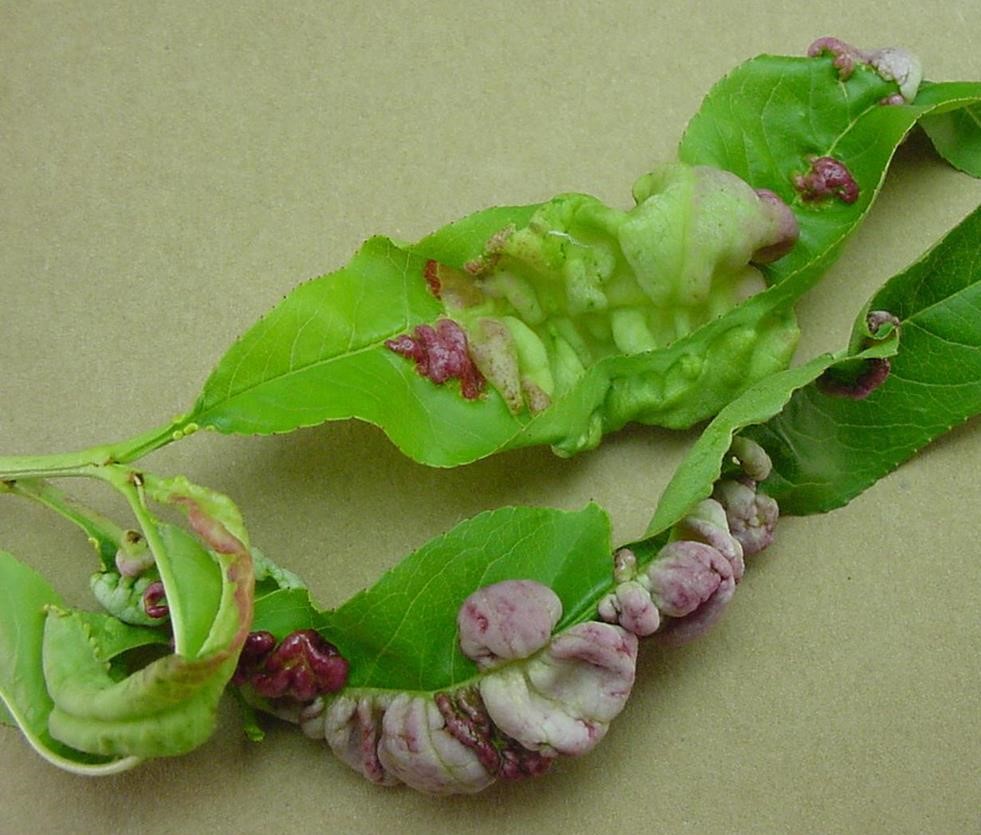
Figure 48: Peach leaf curl symptoms.
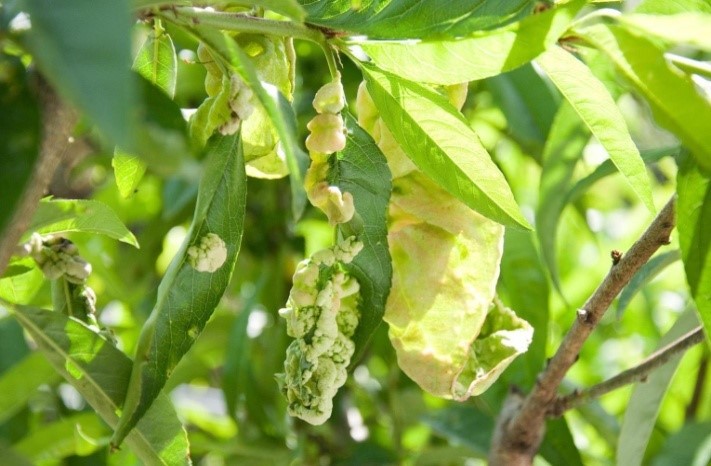
Figure 49: Leaf curl on peach.

Figure 50: Peach leaf curl symptoms.
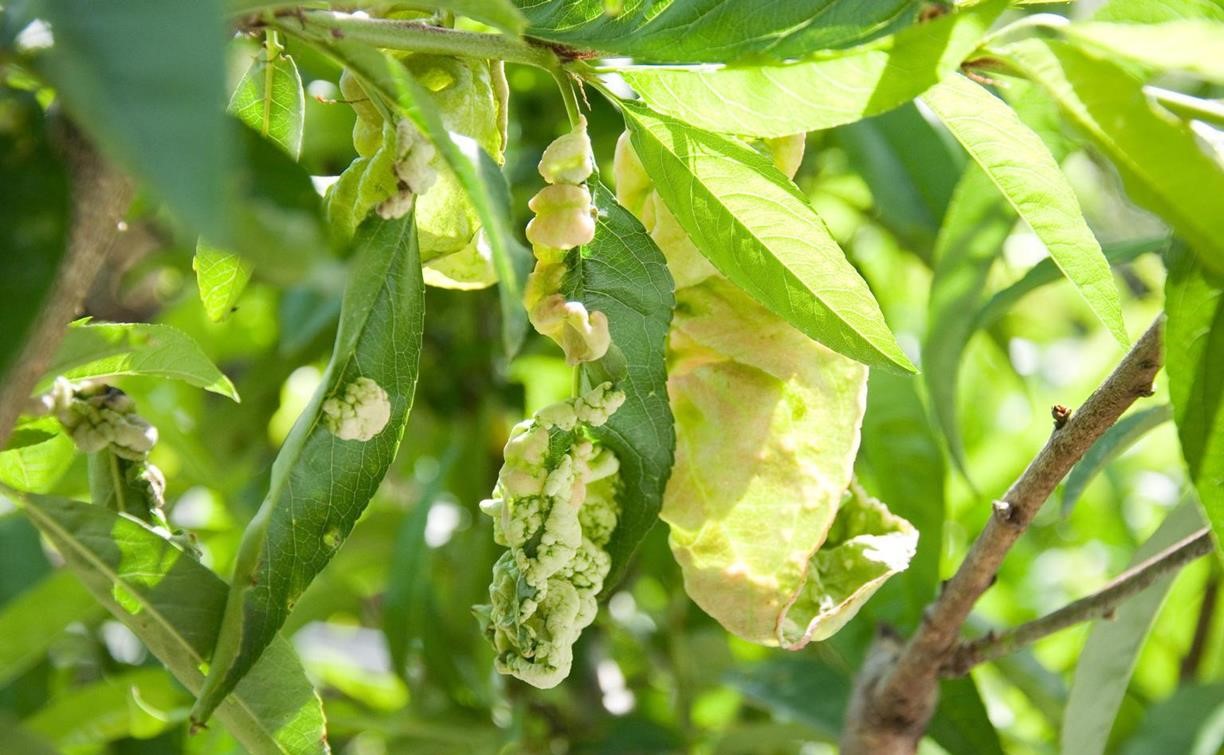
Figure 51: Peach leaf curl symptoms on foliage.
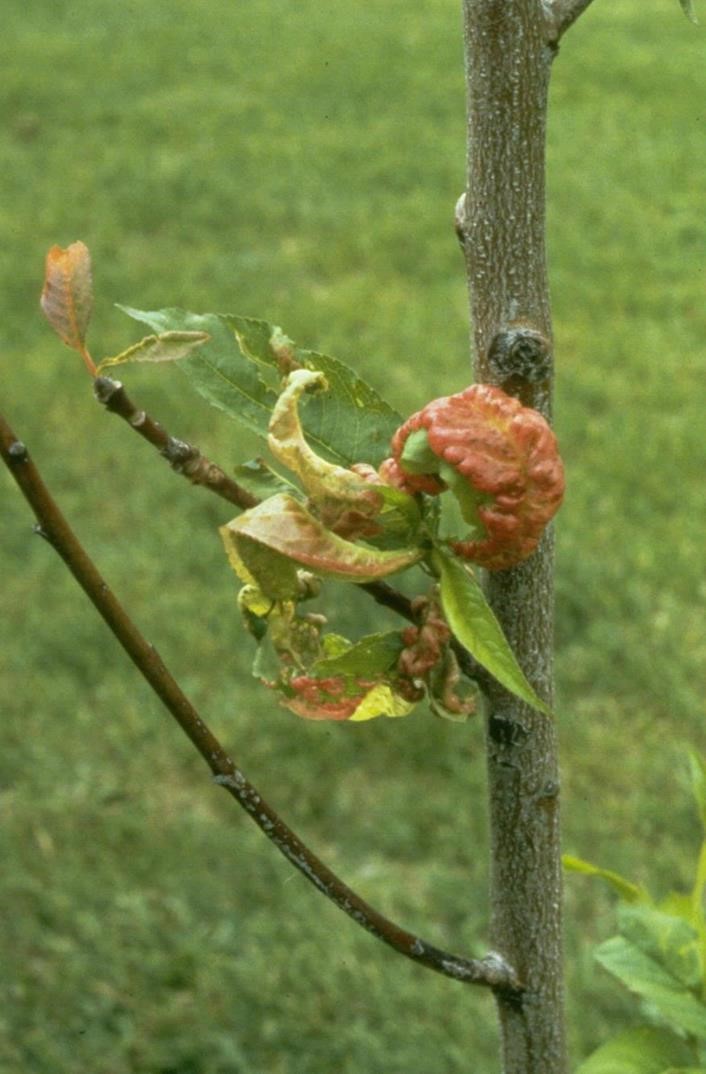
Figure 52: Peach leaf curl symptoms on young peach tree.

Figure 53: Peach leaf infected with leaf curl.
Symptoms
Yellow to red patches on young leaves in Spring which thicken and pucker causing leaf to curl; puckered parts of leaf may develop white covering; infected leaves may drop from plant or remain attached and turn dark brown; infection of fruit is rare but causes irregular, raised and wrinkled red lesions.
Comments
Emergence of leaf curl is promoted by periods of cool, wet weather during the early stages of bud development.
Management
The primary method of controlling peach leaf curl is the application of appropriate fungicides and/or planting resistant peach varieties; no peach varieties are completely resistant to leaf curl.
10. Plum pox virus Plum pox virus (PPV)

Figure 54: Symptoms of plum pox on peach leaves.

Figure 55: Symptoms of plum pox on peach fruit.
Symptoms
First expanding leaves exhibit chlorotic veinclearing and veinbanding; lamina twisted and distorted; fruit show dark rings, lines and spots; symptoms on fruti may disappear on ripening; fruit may be deformed.
Comments
Virus is transmitted by aphids but most common method of spread is diseased plant material.
Management
Plant certified healthy material; remove infected trees from orchard; chemical sprays to control aphids may prolong spread of virus.
IV. Category: Oomycete
11. Phytophthora root and crown rot Phytophthora spp.
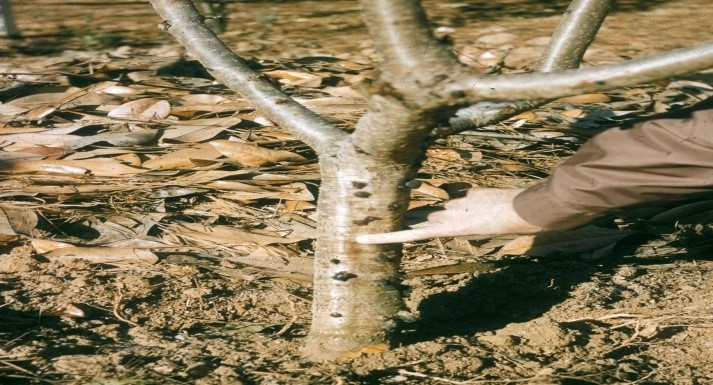
Figure 56: Peach tree showing symptoms of Phytophthora infection.
Symptoms
Poor new growth; leaves chlorotic, small in size and sparse; fruit may be small, brightly colored and susceptible to sunburn; shoots may suffer from dieback and tree will often die within weeks or months of first signs of infection or decline gradually over several seasons; root crown may show signs of decay which develops into a canker; bark of infected crown tissue turns dark brown; cankers may occur on aerial parts of plant.
Comments
Severity of disease is linked to soil moisture content; water-saturated soils promote development of fungus.
Management
Management of phytophthora is reliant on good management of water: peach trees should be planted in well-draining soil to minimize the frequency and duration of water saturated soil; trees should be propagated from resistant rootstock and application of appropriate systemic fungicides may provide some protection from the disease.
V. Pests
Category: Insects
12. Fruittree leafroller: Archips argyrospila

Figure 57: Fruit tree leaf roller.
Symptoms
Leaves of plant rolled and tied together with silk webbing; feeding damage to rolled leaves; defoliation of plant; silk webbing may also be present on fruits and fruits may have substantial scarring from feeding damage; larvae wriggle vigorously when disturbed and may drop from plant on a silken thread.
Comments
Only one generation of insect per year.
Management
Monitor plants regularly for signs of infestation; remove weeds from plant bases as they can act as hosts for leafrollers; avoid planting pepper in areas where sugarbeet or alfalfa are grown nearby; Bacillus thuringiensis or Entrust SC may be applied to control insects on organically grown plants; apply sprays carefully to ensure that treatment reaches inside rolled leaves by Oriental fruit moth Grapholitha molesta:

Figure 58: Oriental fruit moth larva and damge to shoot tip.
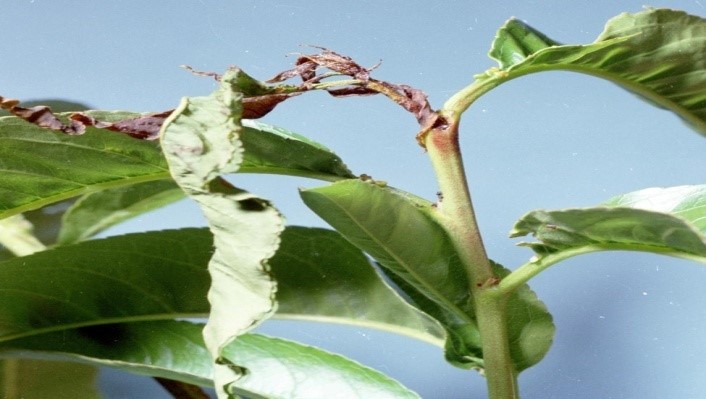
Figure 59: Flagging caused by oriental fruit moth strike.
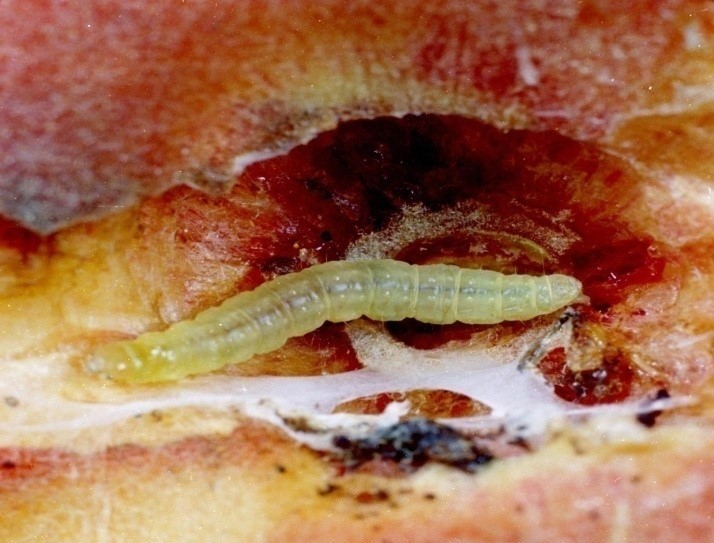
Figure 60: Oriental fruit moth larva inside peach.
Symptoms
Wilting shoot tips ("flagging") caused by insect feeding; insect frass may be visible around entry holes burrows in fruit which cause the fruit to be soft, mushy and discolored; adult insect is a small gray moth; larvae are initially white with a black head but turn pink with a brown head as they mature.
Comments
Orietal fruit moths overwinter as mature larvae inside protective cocoons in protected areas of trees or in leaf debris on the ground; insect may undergo six or more generations per year.
Management
Management of the oriental fruit moth usually involves the application of insecticides or the use of mating disruptants; commercial growers should monitor moth numbers using pheromone traps and apply insecticide if average number of moths exceeds 10 per trap; chemical sprays should not be applied within 14 days of harvest.
13. Scale insects (White peach scale, San Jose scale) Pseudaulacaspis pentagona, Quadraspidiotus perniciosus
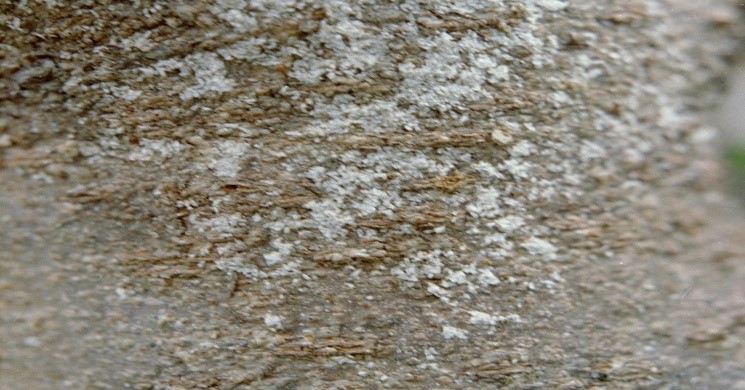
Figure 61: White peach scale infestation.
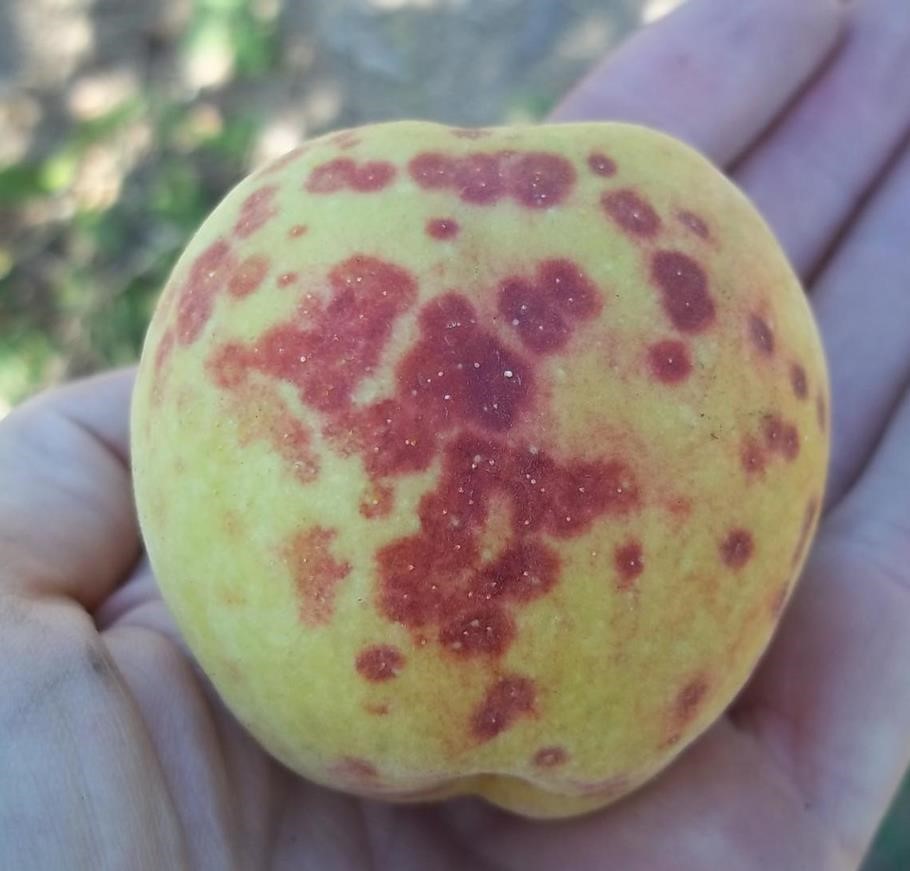
Figure 62: Damage to fruit caused by San Jose scale.
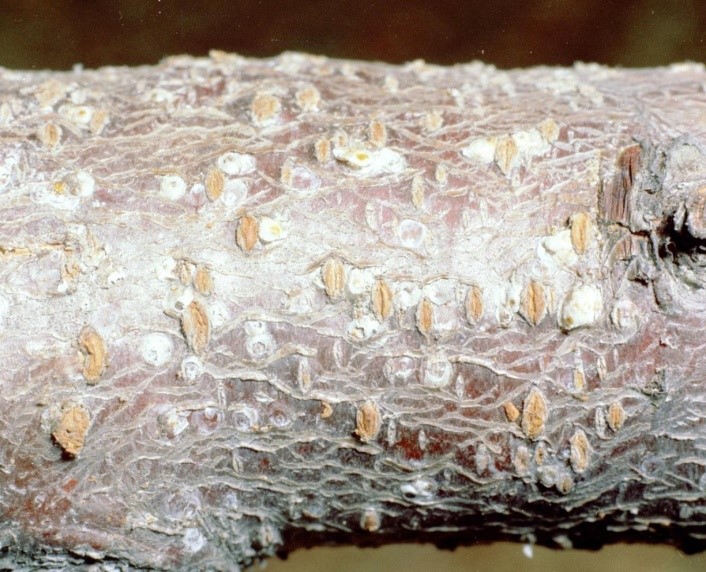
Figure 63: White peach scale on peach branch.
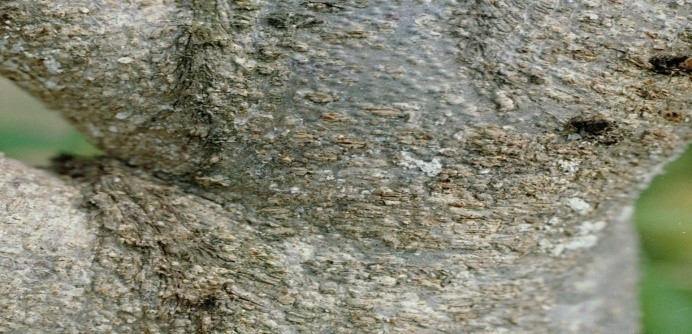
Figure 64: White peach scale infestation.
Symptoms
Scale insects cause damage by feeding on twigs, branches and fruit on peach trees, injecting toxins into the plant as they do so; if the infestation is heavy, gumming may occur on the bark and twigs or entire branches can be killed; insects are flattened discs, or "scales" with no visible legs; scales produce a white waxy coating which eventually turns black (black cap stage).
Comments
Scale insects overwinter in the black cap stage; winged adult males mate with females which retain their eggs inside the body until they hatch.
Management
Populations are often kept in check by natural enemies, including predacious beetles and some wasps - although broad-spectrum insecticides may result in outbreaks of scale by killing off populations of beneficial insects; peach trees can be sprayed with horticultural oils when dormant which effectively kill scales without damaging natural enemies.
14. Powdery mildew disease cause white powdery substances on the leaves, buds and flowers. This disease is controlled by spraying Sulfex @ 2.5g/l of water.
15. Shot hole disease is caused by fungus, in which dark brown scattered lesion on leaves appears. This disease is controlled by spraying with Captan @ 2g/l of water.
16. Peach leaf curling aphid suck growing buds. Leaf buds become weak and result in poor setting and fruits falls-off prematurely. It can be controlled by spraying with Dimethoate (Rogor) @ 1.5 ml/l of water or Monocrotophos (Nuvacron) @ 2.5 ml/l of water at 7-10 days before flowering.
17. Tem borer feed below the bark, making minute irregular galleries, resulting the bark split and gum oozes out from the holes. The branches start drying up and do not bear fruits. The affected branches should be cut and destroyed. Nuvan or Monocrotophos @ 2.5ml/l of water or petrol at the rate of 5ml per hole should be injected and close the holes with clay mud thoroughly.
References
1. Huxley A. 1992. New RHS dictionary of gardening. Macmillan. 474945.
2. Jana BR. 2015. Performance of some low chill peach [Prunus persica (L.) Batsch] under eastern plateau regions of India. 4: 752-757.
3. Josan JS, Thind SK, Arora PK, et al. 2009. Performance of some low chilling peach cultivars under north Indian conditions. Environment and Ecology. 27: 1923-1926.
4. Singh D, Gracely Y, Kumar K. 1967. Performance of some low chill peach, Prunus persica (L.) Batsch germplasm accessions for fruit quality traits in Himachal Pradesh. International Journal of Farm Sciences. 4: 72-80.
5. Chadha KL, Gupta MR, Singh SN. 1968. Physico- chemical characters of some peach varieties grown at the regional fruit research sub-station, Bahadurgarh. Journal of Research. 6: 78-81.
6. Edward FG, Watson DG. 1994. Fact Sheet St-513, a series of the Environmental Horticulture Department, Florida cooperative extension service, Institute of Food and Agricultural Sciences. 1994.
7. Fishman S, Génard M. 1998. A biophysical model of fruit growth. Simulation of seasonal and diurnal dynamics of mass. Plant, cell and environment. 21: 739-752.
8. Kanwar JS, Chanana YR, Kaundal GS. 2002. Development of new cultivars of peach for the sub-tropics of India. Acta Horticulturae. 592: 103-107.
9. Kher R, Dorjay T. 2001. Evaluation of some cultivars of peach under Jammu conditions. Haryana Journal of Horticultural Sciences. 28: 201-202.
10. Nyambo A, Ruffo CK, Nyomora A, et al. 2005. Fruits and nuts. Relma Technical Handbook. 34.
11. Oluoch E, Mshanga EJ, Kasuku M. 1993. A field guide to the propagation and management of temperate fruit trees. Ministry of Agriculture, Nairobi, Kenya.




















